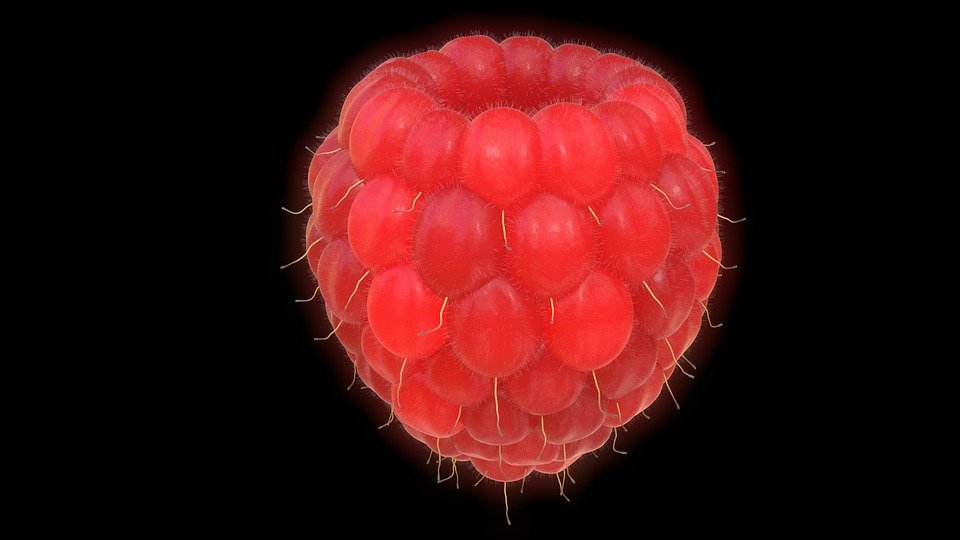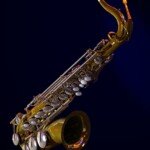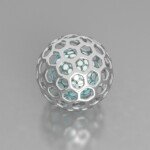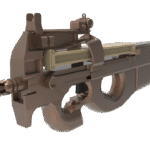The ultimate DIY adventure: print your own custom Hot Wheels track!
Remember the thrill of taking apart a new Hot Wheels car? Now, imagine this excitement by designing and enhancing print Those miniature racers race around the track! 3D printing technology has revolutionized the way we pursue hobbies, and custom Hot Wheels tracks are the perfect entry point. Forget clunky plastic suits – welcome to intricately designed loops, impossible jumps and anti-gravity spirals. This guide takes a deep dive into the world of DIY Hot Wheel track printing to turn your indoor racing dreams into a tangible track reality.
Why print your own tracks? Freedom to create!
Commercial repertoire offers variety, but printing allows for unparalleled customization:
- Endless designs: Design unique layouts – complex intersections, multi-level structures, themed landscaping and more "impossible" Loop through the sketches you made as a kid. CAD software (even free options like Tinkercad or Fusion 360) becomes your playground.
- Perfect fit: Customize track width, connection type (standard connector or innovative clip), tilt angle and features for the perfect fit your Cars and space. Build a section designed for a specific car model.
- Cost-Effective Complexity: While there is an initial printer investment, printing complex or niche rail parts yourself is often much cheaper than purchasing specialized commercial kit.
- Repair and replacement: Break a part? Print replacement parts easily. No need to hunt for discontinued parts!
- Comprehensive features: Embed magnets for increased speed, design clever launch mechanisms, or create track sections with integrated lighting channels (just ensure structural integrity!). Added microcontroller compatibility for automation functionality.
- Final project: This is a highly rewarding STEM program, offering courses in design, engineering (physics of motion!), and 3D printing itself.
Getting Started: Tools and Materials
- 3D printer: Fused Deposition Modeling (FDM) printers are ideal for rails. They are relatively inexpensive, handle the necessary thermoplastics well, and provide the high build volumes required for track sections. Printer size matters: Make sure your printer bed (especially the Y-axis depth) can accommodate the length/width of your planned rail segments.
- filament: PLA is the filament of choice for most beginners and functional printing. It is:
- Hard enough: Provides the rigid track needed to maintain its shape under the weight and movement of the vehicle.
- Smooth surface: Can be sanded/polished after printing to maximize car speed. PETG is a great alternative – slightly more flexible, even more durable, and adapts better to temperature/humidity changes. Avoid using filaments that are too flexible, such as TPU.
- Design software:
- Free and beginner-friendly: Tinkercad (web-based), SketchUp Free.
- Advanced parameters: Fusion 360 (free for hobbyists/startups), FreeCAD, OpenSCAD.
- Libraries and models: Explore repositories like Thingiverse, Printables, and Cults3D to learn about existing track designs and connectors. Use these as inspiration or starting point for your own creations.
- Essential accessories: Calipers (for precise measurements), digital level (for consistent slope), isopropyl alcohol and lint-free cloth (print bed prep), possible drape supports, basic sandpaper/finishing tools. Safety gear (gloves/goggles) when working with adhesive or sanding.
Design and printing process: your blueprint for speed
- conceptualization: sketch! What is the goal? Big cycle? Intricate cityscapes? Long straight dash? Consider the space available and how the various parts are connected. Measure the car’s wheelbase and width.
- Dimensions and tolerances: Precision is key!
- width: A standard Hot Wheels track is approximately 58mm wide on racing surface. Make sure your wheels fit comfortably within the width of your design, taking into account printing tolerances. Include sides/lugs (at least 5-10mm high) to keep the car on track.
- Height and connections: Thoughtfully design connection systems. Standard Hot Wheels "lip" The connector requires a precise slot (approximately 6 mm deep, with carefully adjusted snap-fit tolerances). Keyhole slots or interlocking tabs are alternatives. Make sure the connections are secure and easy to assemble/disassemble.
- Curve radius: Avoid bobby pins! Test tight turns with your car to make sure they don’t fly away. Larger radius curves allow higher speeds. Consider leaning on high-speed corners.
- support: Design segmentation to minimize overhangs requiring support material. Simplify printing and post-processing.
- modeling: Methodically build segments. Start with a simple straight track and refine its underlying connection system before working on complex curves or elevations. Easily resize globally using parameters (in programs like Fusion 360). Pay attention to fillets/chamfers to smooth out the edges where the car might hit.
- slice: Optimize strength and surface finish settings:
- Floor height: 0.15mm – 0.25mm (balance detail/speed/surface smoothness). For cars, smoother and faster!
- Filling density: Crucial! Minimum 25-35%. Use spiral or straight patterns to get a good strength-to-weight ratio. Increased fill (40-50%+) in high stress areas (bottom of loops, jump ramps, attachment points).
- Perimeter/Walls: 3-4 walls (perimeter) significantly increase rigidity and load-bearing capacity.
- Brim/raft: Using edges will prevent larger, flatter sections from deforming.
- Printing direction: Orient the segments so that the track surface faces upward for the best top surface finish. The supports underneath the complex structure required careful removal/sanding.
- Post-processing:
- Carefully remove supports: Use a flat end mill/small pliers. Be precise to avoid damaging the track.
- Polishing: Sand lightly top surface Use increasingly finer sandpaper (start ~220, end ~400-600) for the track the wheels run on. Avoid sharply rounding edges. Lightly sand the connection points for better installation.
- clean: Remove all dust and debris. Wipe with isopropyl alcohol.
- assembly: Attach your parts securely. Test the car and observe the performance. Small flaw? Polish it a little or make iterative design adjustments.
Taking it to the next level: Design considerations for performance
- Friction is the enemy: Prioritize fluency. Polished PLA/PETG works well. Specific additives may be used but tested for compatibility/filament performance. Highway sections require meticulous finishing.
- Revisit material selection: Long term durability? PETG is tougher. Need ultimate smoothness? PETG generally has a better surface than PLA. Transformation challenge? Bed adhesive mod may be required.
- Structural integrity under dynamic loads: Car jumps or hammer cycles produce high instantaneous forces. Reinforce ramps, platforms and ring apexes with higher infill and adequate vertical support/structure underneath. Wider, thicker base design increases stability.
- Integrated electronics: Insert the magnet into the dedicated slot in the reinforcement section. Design LED room. Create rails for switch/activation points. Leave space inside the segments for wiring.
- Test and iterate: The key to success! Print smaller test sections of challenging elements (such as loops) before proceeding to a large print. Expect to modify your design based on empirical testing on your specific car.
Beyond Plastic: The Durability Benefits of Metal (The GreatLight Advantage)
While printed plastic tracks are great, complex mechanisms or competitive high-stress environments demand more. This is where it gets advanced Metal 3D printingprovided by professionals huge lightbecome a game changer:
- Unparalleled Strength and Durability: Say goodbye to buckling or creeping under load. Metals (such as stainless steel 316L, aluminum AlSi10Mg) can easily handle high-speed impacts and repeated stresses.
- Excellent surface finish: GreatLight’s metal parts typically have a very smooth surface (low Ra value) fresh from the printer, minimizing friction and allowing for blistering speed without the need for extensive post-processing.
- Precision Engineering: Create complex mechanical elements such as gear launchers, complex articulated joints for track configurations, or suspension systems that require micron-level precision.
- Heat resistance: Great for tracks in warm environments or projects that add motors/warm lighting that might warp the plastic.
- Weight Advantages (For Certain Movements): The weight increases the stability of high-speed sections and the underlying structure, reducing vibrations.
Have a track component that requires superpowers? Think of ramps that require large amounts of air, complex activation door mechanisms, internal transmission components for automated functions, or extremely complex rising spiral structures where strength cannot be compromised. GreatLight’s Metal Additive Manufacturing Expertise Turn these high-performance visions into reality using the latest equipment and sophisticated post-processing to achieve top-notch finishes and functionality.
Conclusion: Unleash creativity at every level
Printing your own Hot Wheels track is an incredibly satisfying journey. It blends creativity, engineering and tactile fun, providing countless hours of design challenges and exciting competitions. From simple loop designs on your desktop printer to epic room-spanning structures, the possibilities are only limited by your imagination and the size of your printer. Embrace iterative design, learn from print, and watch your miniature racing world expand.
For those pushing the boundaries of high-performance and demanding mechanics, explore Metal Additive Manufacturing Take durability and precision to the next level. company likes huge light Be prepared to utilize expert additive manufacturing techniques and finishing to tackle these complex metal parts, ensuring your most ambitious track components are built to last. So fire up your design software, load up your filament (or contact a metal expert), and get ready to print for an unparalleled Hot Wheels experience!
Frequently Asked Questions (FAQ)
Q: What type of 3D printer is best for making Hot Wheels tracks?
A: FDM (Fused Deposition Modeling) printers are the best choice for most hobbyists. Look for a printer with an appropriately sized build plate (minimum 200x200mm, larger such as 300x300mm is better for longer segments) and reliable performance. Brands such as Prusa, Creality, Bambu Lab or Anycubic offer suitable options at different price points.
Q: PLA vs PETG: Which filament should I use?
one: People’s Liberation Army: It is easier to print, has good stiffness, is cheap and is widely used. May deform slightly under high temperature/direct sunlight. Perfect for standard indoor tracks.
Polyethylene glycol: Stronger, more durable, more impact resistant, better heat/moisture resistant, and generally prints with a slightly smoother surface. Printing may be slightly more complicated than PLA initially (retract the setup key). For tracks where heavy use or warm environments are likely to occur, PETG is highly recommended. ABS is also possible but requires ventilation and good bed adhesion control.
Q: The car flew out of my curve! What’s wrong?
one: Radius is too tight: Increase curve radius (makes turns wider/wider).
Curve not stored: Add bank/incline (just like a real race track) to help the car turn at higher speeds.
The track is not level/inclined: Make sure the assembly is level; check for warped prints that need to be sanded or redesigned.
Surface roughness: Polish the surface of the track where the car runs very smooth. Is the sudden move to either side of the track over? Smooth these transitions.
Vehicle speed is too high: Add sharp curves (S-curves) before sharp turns to naturally reduce speed.
Q: How do you design a reliable connector?
answer:* measure: Carefully measure the standard connector’s socket dimensions. Application Tolerance – Typically a few tenths of a millimeter of clearance to achieve a good press/friction fit.
- Test print: Small test connectors were designed and printed repeatedly until the fit was tight, but not impossible.
- Alternative mechanism: Consider using keyhole slots with dowels, sliding dovetails, or clips instead of just friction slots for a stronger connection, especially on long curved sections.
Q: How can I increase the speed/smoothness of the track?
A: 1. Carefully sand/polish The entire top contact surface The wheels keep going. Start coarse and end fine (1000+ grits).
- Reduce friction: Ensure the track base is stable and does not bend significantly under the weight of the car (bending increases drag). Keep joints aligned.
- Consider using a track accessory such as wax or a specialty dry lubricant (use with caution and test).
- Reduce fill-induced patterns: More top layers (5-7) are significantly smoothed during printing.
Q: What are the restrictions on printing tracks?
A: Long flexible straight sections may twist slightly without support. For some hobby printers, tight design tolerances are a challenge. Large loops require a lot of structure and testing to avoid crashes. Materials have limitations compared to industrial molded plastics.
Q: When should I consider 3D printing with metal instead of plastic?
Answer: The shining points of metal additive manufacturing are: Complex mechanical parts such as firing mechanisms/gears/pivots. Permanent, extremely durable high-load-bearing components (e.g. apex of large rings, heavy-duty rail supports). Creating intricate details requires higher material strength than plastic. Projects requiring superior dimensional stability and surface finish to reduce friction. Environments not suitable for thermoplastics (high temperatures, solvents). (Note: GreatLight specializes in these demanding metal additive manufacturing applications*)
Q: Can I print tracks using materials such as stainless steel or aluminum?
one: Yes, absolutely, but it requires an industrial 3D printing service like GreatLight. Plastic home printers cannot melt metal. Metal Additive Manufacturing (Powder Bed Fusion – SLM/SLM, DMLS, Binder Jetting) uses laser/heat to form parts from metal powder.
advantage: Extremely high strength, durability, heat resistance, high precision and complex geometries.
shortcoming: The cost is higher, professional services are required, and the design requires metal additive manufacturing knowledge constraints.
Suitable: Beyond the scope of DIY plastic printing are custom rails or critical high-stress components in automated systems.










































